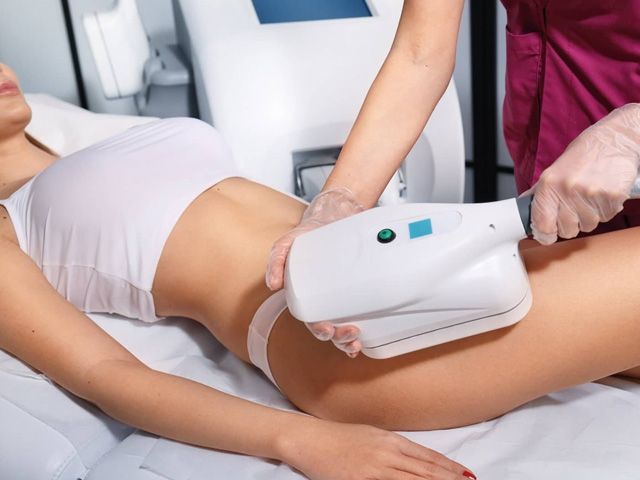
What is Cryolipolysis?
Cryolipolysis (or fat freezing) is a dermocosmetic procedure used to decrease local fat deposits by freezing them. This procedure does not require surgical intervention, but must be performed by a cosmetic dermatologist due to possible negative results.
In cryolipolysis, fat tissues are cooled from out of the skin with a special device. The low temperature crystallizes the fat cells, allowing the cells to break down and be excreted by the body. This method is less invasive than most other fat reduction techniques and usually has minimal side effects.
It is especially effective in areas with stubborn fat deposits such as the waist, abdomen, buttocks, legs, arms and chin area. However, it is definitely not a solution for the treatment of obesity and does not help to reduce overall body weight.
What is fat freezing used for?
Fat freezing is used to reduce unwanted fat deposits in various parts of the body. The procedure can be considered as an option for body shaping and slimming when diet and exercise don’t work. It can be preferred by people who want to avoid surgical methods or who are sensitive to the risks of surgery.
How is Cryolypolysis performed?
In the procedure, a probe is moved on the skin surface and cooling is applied to a degree that can reach the fat tissues. Before the procedure, the skin is covered with a special gel or a wet pad to protect it against cold burn.
Freezing of fat cells causes apoptosis (programmed cell death) of fat cells. In this way, fat tissues are reduced.
Which body parts can fat freezing be applied to?
In general, it can be applied to buttocks, legs, belly, back, love handles and arms. However, since this situation may vary from person to person, it is recommended to make the decision with a dermatologist. This procedure can also be combined with other slimming and aesthetic treatments with the recommendation of a specialist cosmetic dermatologist.
How many sessions is cryolipolysis?
In most cases, a high rate of success is achieved with 1 session, but the treatment can be extended up to three sessions on doctor’s recommendation. First positive signs of local thinning will be realized in 3 weeks and the complete effect can be seen by second month.
Is the effect of cryolypolysis permanent?
If the patient completes the procedure with exercise and diet, a permanent effect can be achieved. Otherwise, relapses can be seen with the onset of fat regrowth.
Side effects of Cryolypolysis
Although rare, some side effects may occur after the procedure:
- Redness
- Swelling
- Bruising
- Cold burns
- Regional loss of sensation
- Skin hypersensitivity
What are the advantages of cryolypolysis?
It is less invasive: Fat freezing is less invasive as it does not require a surgical intervention. Therefore, the recovery time is shorter and allows patients to return to their daily lives faster.
It is less painful: Like other fat reduction techniques, cryolypolysis may cause some pain or discomfort. However, it is usually minimal and painkillers will not needed.
Safe and effective: It is approved by the FDA and clinical studies have proven its efficacy and safety.
It is locally effective: It is particularly effective in areas with stubborn fat deposits such as the waist, abdomen, buttocks, legs, arms and chin.
Long-lasting results: After the procedure, a portion of fat cells are completely destroyed and do not return. However, just like other fat reduction methods, leading a healthy lifestyle will help the results to be ever-lasting.
Minimal side effects: The procedure has minimal side effects. Usually, there may be temporary side effects such as swelling, redness, mild pain or tenderness. However, serious side effects are rare.
Who should not have Cryolypolysis?
Fat freezing should never be administered without consulting a specialist doctor in the following cases:
- Severe liver and kidney disease
- Raynaud’s disease
- Cold urticaria
- Those with cold-induced diseases (cryoglobulinemia, cold agglutinin and paroxysmal cold hemoglobinuria)
- Low blood protein levels
- Diabetes
- On-going cancer treatment
- Active infection and high fever
- Pregnancy and breastfeeding
- Some skin diseases such as psoriasis and vitiligo
- Obstructive cardiovascular diseases

